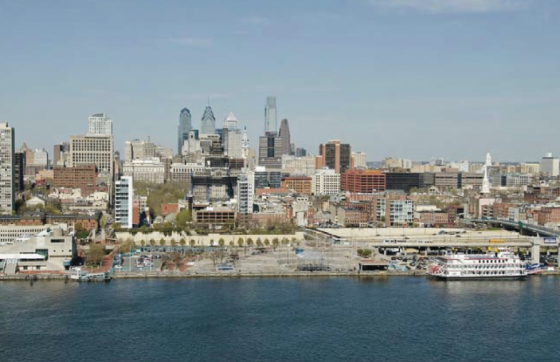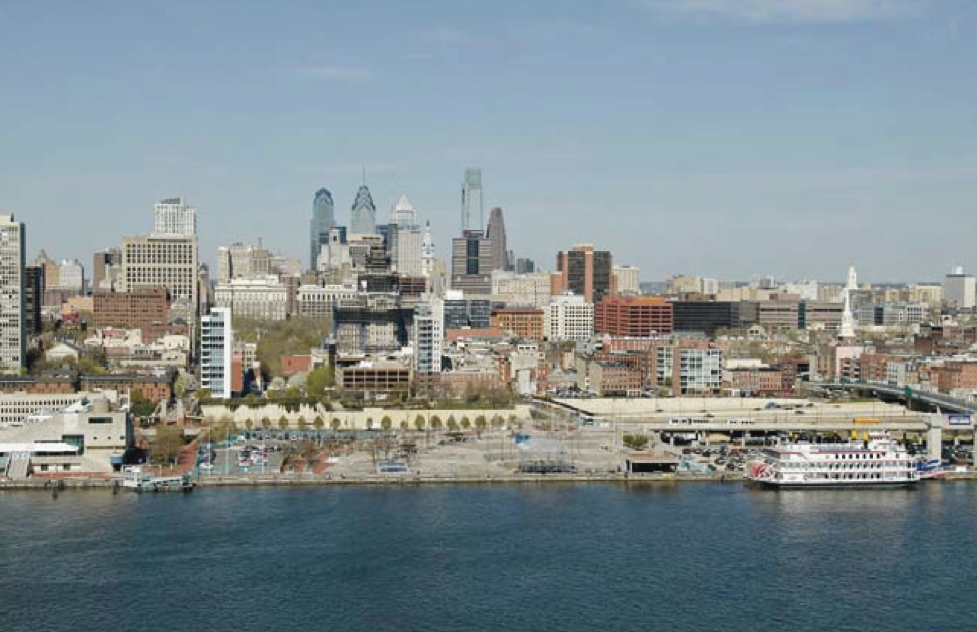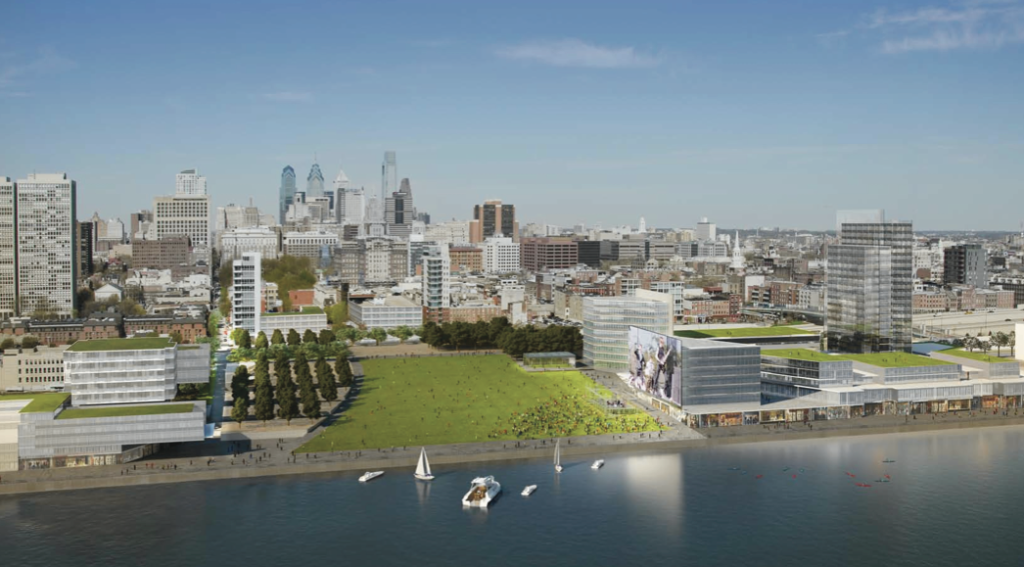A phased green redevelopment of Penn’s Landing is edging ever closer as the Delaware River Waterfront Corporation (DRWC) announced this month its selection of international and domestic award-winning firm Hargreaves Associates to perform preliminary design work on the area defined by a stretch that runs between Market and South Streets and extends from Front Street to the river.
The concept envisions an eight acre Penn’s Landing Park as the centerpiece of this sustainable redevelopment, that will connect Walnut and Chestnut Streets to Penn’s Landing, as well as redefine the current slope as it descends from the expressway towards the river. Other plans include a cap over I-95 and the development of a six acre site at Front & Market. Those and other concepts were informed by the Master Plan for the Central Delaware, a two and a half year planning effort sparked with the help of a $1M William Penn Foundation grant that started in 2009.
“What’s important about this plan in terms of strategy is phasing,” said Michael Greenlee of DRWC. This part of the redevelopment process, according to Greenlee, will be highly focused on engineering and site design. If the above mentioned ideas are working concepts, this part of the plan will focus on how to implement them. Designs will also focus on redevelopment of the four acre western and southern edges of the Marina Basin site and extending the South Street pedestrian bridge to Penn’s Landing.
Hargreaves has redesigned waterfronts from the beaches of Abu Dhabi to San Francisco, including Chattanooga and Louisville, where the waterfront was also separated from the city by a highway. They also designed the sustainable Queen Elizabeth Olympic Park in London for the Olympic Games last year. The first of the two-phased study will focus on preliminary design and engineering, as well as magnitude of cost. Phase II will include a detailed infrastructure plan as well as refinement of the information presented in Phase I to the point it can be presented to public, private, and philanthropic interests in the name of necessary approval and funding and eventual construction. The study is expected to be completed this year. The cost of the study is not to exceed $425K, according to the DRWC.
While it may be some time before any work begins, this is important news. It took years to align the necessary actors. We look forward to seeing these concepts finally come to fruition in the years to come.
–Lou Mancinelli




Leave a Reply